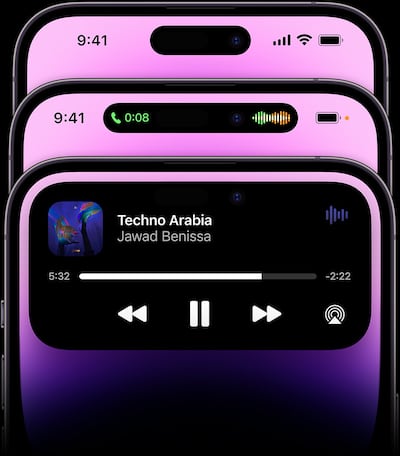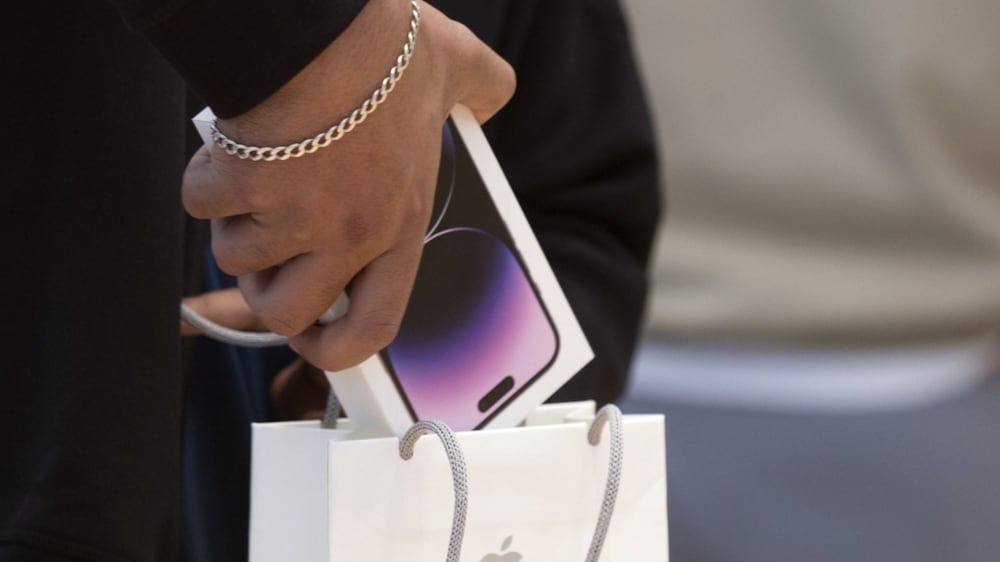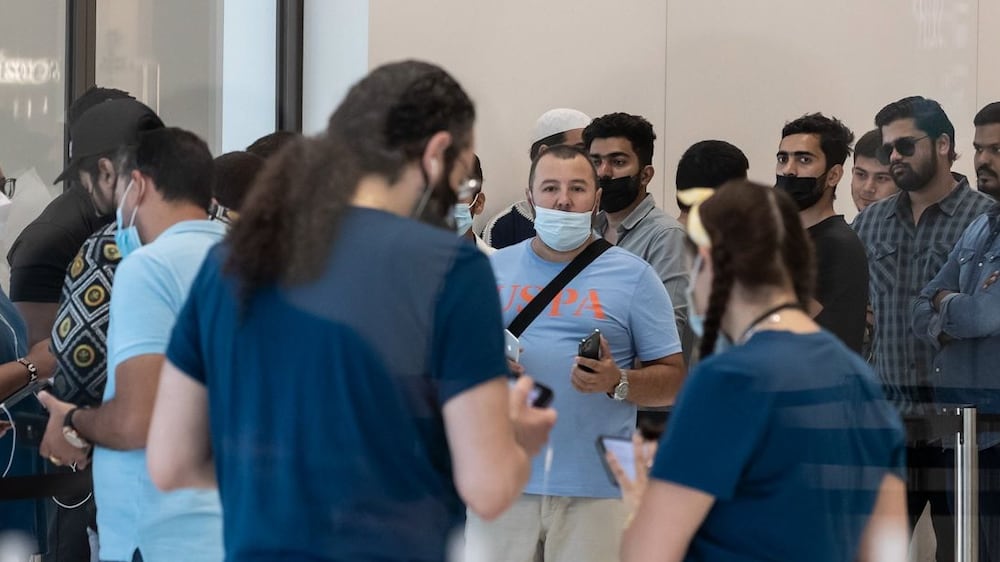The iPhone 14 Pro models are creating quite a stir in the market, and all for good reason.
Leaks, rumours and even confirmed details have all played a big part in the hype, in the lead up to their release.
This has resulted in overwhelming demand, as many iPhone users decide it is time to upgrade from their ageing devices.
The Apple iPhone 14 Pro Max is the flagship of the series and it introduces several significant upgrades, some of which we may see copied again in other smartphones.
Here's what is creating the pull.
Design
The iPhone 14 Pro Max retains the geometric, curved-edged design Apple brought back beginning with the iPhone 12. There is no remarkable difference, except for the camera block, which is once again bigger and now at par with the right edge of the leaf on Apple’s logo.
Apple is still using its Ceramic Shield up front — described as the “toughest in any smartphone” — and matte glass rear, all bound by stainless steel edges.
For the US versions, don’t expect a SIM card tray on the left side, because all units sold there now use only eSIMs. In the rest of the world, you can either use a dual-eSIM or eSIM-plus-physical SIM combo.
There are no other remarkable tweaks when it comes to design. Except for the one we are diving into next, which is the iPhone 14 Pro’s defining trait.
Introducing Dynamic Island
The notch, popularised by Apple since the 2017’s iPhone X, remains to this day a bit polarising. Apple addressed that with Dynamic Island. It’s a shape-shifting space that expands to certain degrees depending on which app or function is using it.
For example, during an incoming call, it will expand almost the width of the screen, to show the caller ID and the accept/reject buttons. Once you accept the call, it’ll shrink down but still show the caller’s image or initials (if you have either saved) on the left, while on the right you’ll see a voice meter that moves to indicate talking.
For Face ID, it expands into a square to show the icon for either accepting or rejecting the scan. If you have music playing, tapping on it expands the area so you can access playback controls.
The list goes on, but you get the point: Dynamic Island works independently — a second screen, essentially — and eliminates the need to go full screen or disrupt the main view, so you can continue with whatever app you are in.
At its very base, Dynamic Island consists of a pill and punch-hole, both of which house Apple’s TrueDepth and FaceID systems.
Speaking of that, here’s a little background: in 2015, LG, with its V10 smartphone, introduced what was called a second screen, a 2.1-inch strip on top of its 5.7-inch display that was always on.
This could’ve been the prototype for what Apple has come up with today. LG’s second screen was a novel idea, but most people found no use for it, given it was static and basically displayed shortcuts.
Apple seems to have taken that several steps further. Notches, punch-holes and pills have all been perceived to obstruct part of the view of a phone’s display, and Apple has removed that by making those spaces interactive and also, entertaining. Apple deserves applause for this idea.
Not all apps, however, can utilise Dynamic Island as of now, and we are sure developers are working towards turning this feature into an advantage.
Apple created quite a commotion when it introduced the notch five years ago. And yet, others copied it. It will be interesting to see how other brands develop their own versions.
Performance
With the new A16 Bionic chip, Apple promises, again, the best performance in a smartphone chip. The A16 has a six-core CPU, five-core GPU and 16-core Neural Engine.
Those are the same numbers from last year's A15, but the A16 now uses four-nanometre architecture, which allows it to squeeze in 16 billion transistors, up from the A15's 15.8 billion. Nanometres in chips define not the actual size, but the distance between transistors; the lower the number, the more transistors can be fitted in.

Apple also says the A16 is 40 per cent faster than the competition, 20 per cent more power-efficient and crunches 17 trillion operations per second. Those are a lot of numbers to digest, but the point is Apple's own silicon technology continues to improve with every iteration.
The improvements of the A16 are reflected, most notably, in its battery, and it also proves its worth in graphics-heavy apps, particularly games, as the device provides 50 per cent more bandwidth to deal with these.
The A16 powers the overall efficiency of the iPhone 14 Pro Max: it is lag-free and runs smoothly.
Camera
iPhones have never crossed the 12MP threshold, bucking the trend of other brands that have incorporated insane amounts of pixels into their cameras. That all changes now as Apple has decided to use a 48MP main sensor on the iPhone 14 Pro's triple-lens system.
Apple's new snapper system, compared with the iPhone 13 Pro Max, has a 65 per cent larger sensor, up to three times brighter shots in low light and significantly improved image stabilisation.
The camera really stands out during the night time, as seen in our gallery below.
Video is also unquestionably good. A major reason for the iPhone's success in the past couple of years has been its cinematic mode, which Apple touts as being Hollywood grade. The improved stabilisation the device offers is also a big plus.
iPhone 14 Pro Max sample video

Battery
The iPhone 14 Pro Max has a 4323mAh battery that, curiously, is a tad smaller than its predecessor’s 4352mAh. But the A16 chip makes up for that.
From a full charge in the morning, we were able to go through more than a day-and-a-half before reaching out for the charger ― and that includes a good chunk of our time spent on work and play. On the iPhone 13 Pro Max, the same amount of use resulted in charging up the device at around noon the following day.
Meanwhile, in our one-hour YouTube-at-full-brightness test, the device lost 6 per cent, which is better than the 13 Pro Max’s 8 per cent.
The 25 per cent improvement in the YouTube test and the extra hours in our all-day run further prove the efficiency of the A16 Bionic chip, as the smartphone was still able to use less power despite a smaller battery to begin with.
On the charging front, using a 30W Apple charger, the iPhone 14 Pro Max surged to 53 per cent in 30 minutes — beating its advertised 50 per cent in half an hour estimates — then went up to 84 per cent in one hour before settling to full capacity about 40 minutes later.
Watch: iPhone 14 Pro and Pro Max unboxing

The model also supports wireless charging, but it's nowhere near as fast as wired charging. The biggest issue dogging wireless charging is its speed, but the growing number of accessories and establishments offering this option comes in handy.
The verdict
Each year, smartphone users arrive at a point where they contemplate upgrading their devices. The iPhone 14 Pro Max makes a very strong case in 2022.
There are a lot of factors in favour of Apple this time: aside from the upgrades, particularly in the camera, battery and the Dynamic Island experience, Apple decided not to raise prices, which can be a motivating factor for potential buyers.
We have already pointed out that the iPhone 14 is able to hold its own ground as an excellent option. But if you are going to upgrade anyway, go Pro. Sure, there is quite a difference in prices, but iPhones can last years — and this is one of the best jumps Apple has made.
Apple super fans queue to scoop up first iPhone 14s at Dubai Mall







